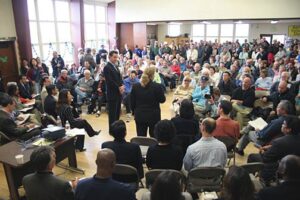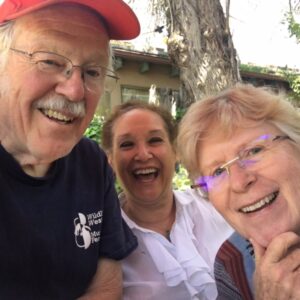Great Planning Gets Stakeholders Involved and Excited
Old methods of strategic planning are static and boring. They don’t achieve results because they don’t fully engage your stakeholders, and use them as partners to build the plan.
Strategic planning that goes beyond the basics and really works involves consultants who can bring the following to the project:
- Excellent knowledge of your organization, its programs and services, strengths, weaknesses, challenges, and key issues that should be addressed. For years, many organizations would call in planners who could facilitate meetings, but didn’t have a good understanding of the organization or the field. Today’s fast-paced environment requires consultants with expertise, who can hit the ground running.
- Great understanding about your staff and board roles and responsibilities, their work, and rapport with board and staff leaders. Board and staff roles and responsibilities work like both houses of Congress. The clearer the responsibilities, the easier it is to function. Strong working relationships between board, staff and consultant can help an organization build and implement its plan much more easily.

- Ability to engage key stakeholders from the beginning, in more than meetings – in shared work to develop materials for a strategic planning retreat. A skilled consultant usually works with a staff-board leadership team to develop the planning retreat. The consultant can help board and staff groups gather information in ways that are time limited, that engage them in sharing their expertise and shaping the work. The consultant can then build the agenda and pre-planning materials from this information, and involve key staff and board members in sharing their expertise during the meeting. This builds involvement and stakeholder buy-in.
- Skilled analysis of your programs against state and national benchmarks, to help staff and board identify areas of excellence and challenge, and create summaries for the planning session. This helps board and staff understand where the organization’s work excels and could be cited as a model, and where there needs to be further development.
- Financial, fund raising and program data analysis to determine where you’re ahead of the game, and where you’ve got issues that need to be addressed. Many agencies have programs that are cost center and profit centers, but the extent to which this is the case with each program is often not well known. Financial and fund raising data needs to be analyzed for the underlying themes, trends, and “ah-ha’s.” Doing this analysis doesn’t take highly skilled consultants a lot of time, and is key to driving an effective planning process.
- A high-energy, engaging retreat is a “must-have” for organizations, using some tech tools where appropriate. The group should be actively engaged in facilitated large and small group discussion working through goal areas to actually identify priorities, and begin to build strategies. if the strategic planning retreat ends with the plan framework in place, with priorities and some strategies, then board and senior staff leave the meeting refreshed and rejuvenated!
- The final wrriten plan narrative can be developed by the consultant working with the strategic planning group, or by the staff working with the consultant. Many expert consultants have the plan pretty well written by the end of the retreat, and can develop a first draft rather easily. However an organization chooses to develop the narrative is often less important than the way that the organization chooses to implement it, and keep it from becoming a shelf document. Creating a short 1 to 2 page summary in a matrix format can help many organization leaders keep the plan in the forefront of their thoughts. Identifying people responsible for goals and strategies, with a timeline will keep it real.
Follow up during the first 90 days after the plan is written can set the stage for how well plan goals are implemented. If the organization’s CEO and Board Chair can work together to ensure the plan is on the front burner, that helps a great deal. The CEO can bring the plan summary to staff meetings, management team meetings, and other meetings to track progress. The Board Chair and CEO can do the same with board committees, and at full board meetings.
If your plan is put on your website, and used as a document online, with room for updates by staff and board members with assigned responsiblities, the plan will become live.
It will pop!


